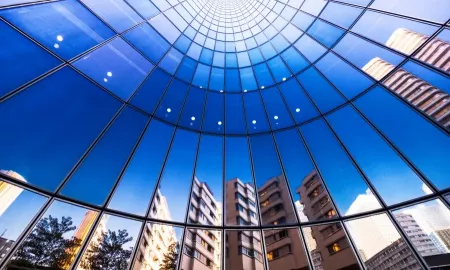A majority of commercial and multi-family residential buildings have flat roofs that use some type of membrane to serve as the weatherproofing for the roof assembly. This membrane works to protect the roof composition below and keeps the water from entering the building and causing damage. The two most important ways to keep the roof membrane working at its peak potential are proper initial installation and routine checkups/maintenance.

Building owners often select single-ply membranes because they have the lowest first cost and require a relatively minimum degree of maintenance. It is easily repairable during any season and is able to perform for many years. In most cases, the construction cost of a roof is a relatively small portion of the total construction cost of an entire project. However, repairs due to roof membrane failure can be high because in addition to paying to repair the roof, monies must also be spent to repair damages to the interior finishes of the building.
Moisture intrusion is the biggest contributor to roof deterioration. Leaks at base flashings, not installed properly at parapet walls, inadequate head laps and back water laps are another problem; water should flow down and over membrane lapping. Under application of the specified membrane adhesive can also cause failures. At the time of installation, if an insufficient amount of fasteners are used to secure the base sheets may allow heavy winds to cause the roof to billow and subsequently cause tears and separation of seams allowing water to enter the roof system and your building.
When visually inspecting a single-ply roof you need to check the entire roof for cuts, punctures, tears and moisture spots. If it seems soft under foot when you are walking on the roof, there could be
moisture problems in the decking or insulation. All laps and perimeter flashings should be checked, closely looking for separations, wrinkles, or openings.
Ponding water on any type of roof system will eventually cause problems. Roofs work hard enough without having to be swimming pools as well. Tapered insulation and crickets help shed standing water to drains. Ponding water can also void warranties, so proper installation is critical.
Check parapet walls and equipment curbs, looking for possible moisture entry points or lack of sealants. In a majority of cases, particularly regarding low-slope roofing, proper attention to the
edging systems is all that would be required to avert disaster, because most of the time it is the failure of the perimeter securement that leads to roof blow-offs.
A healthy roof is also a properly maintained roof. For new roofs, proper attention should be given to every detail, as for existing roofs, keep up with the routine maintenance and you’ll be a proud owner of a high performing roof for years to come.
By Jonathan Stevens, Assoc. A.I.A., LEED AP BD+C





Add new comment